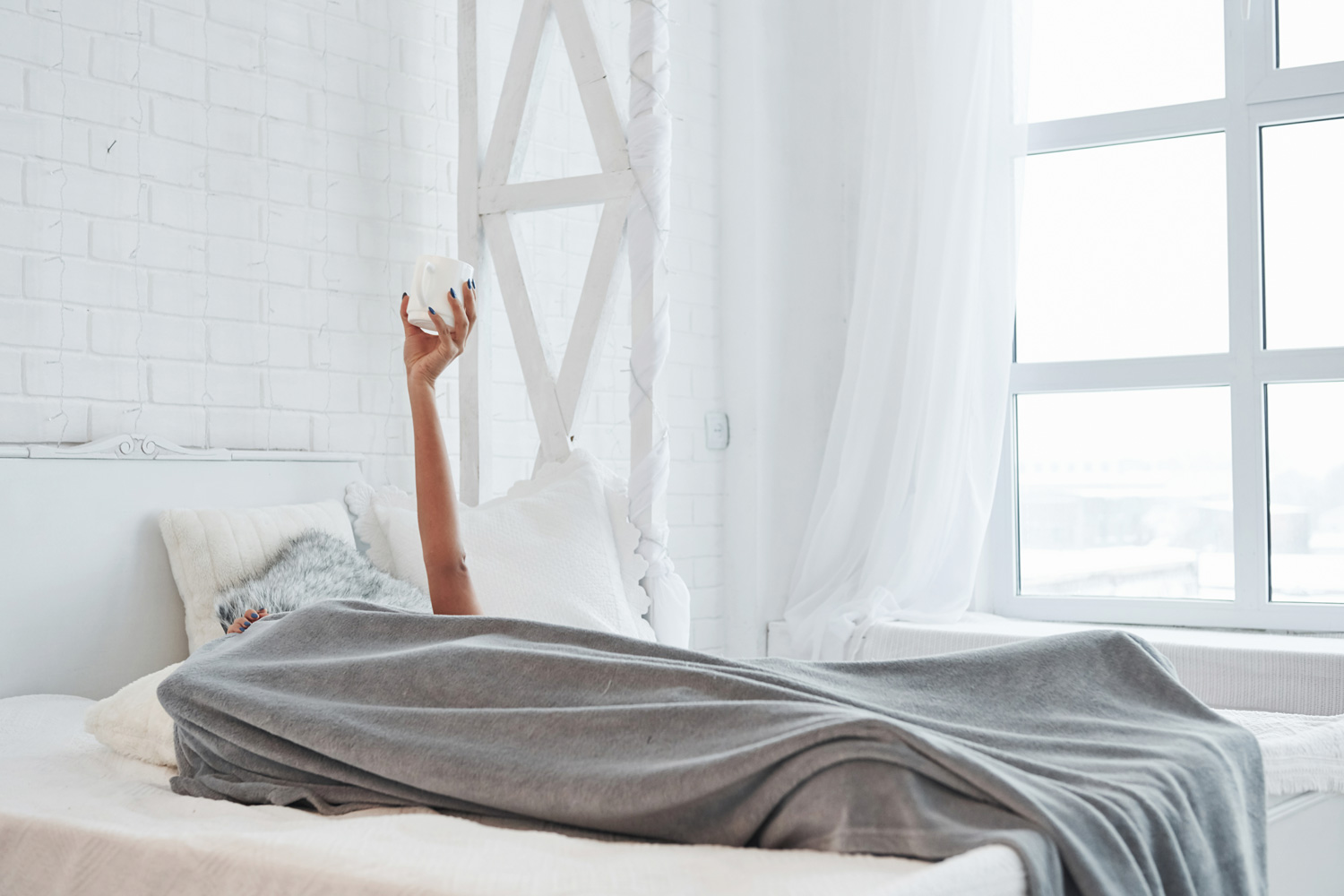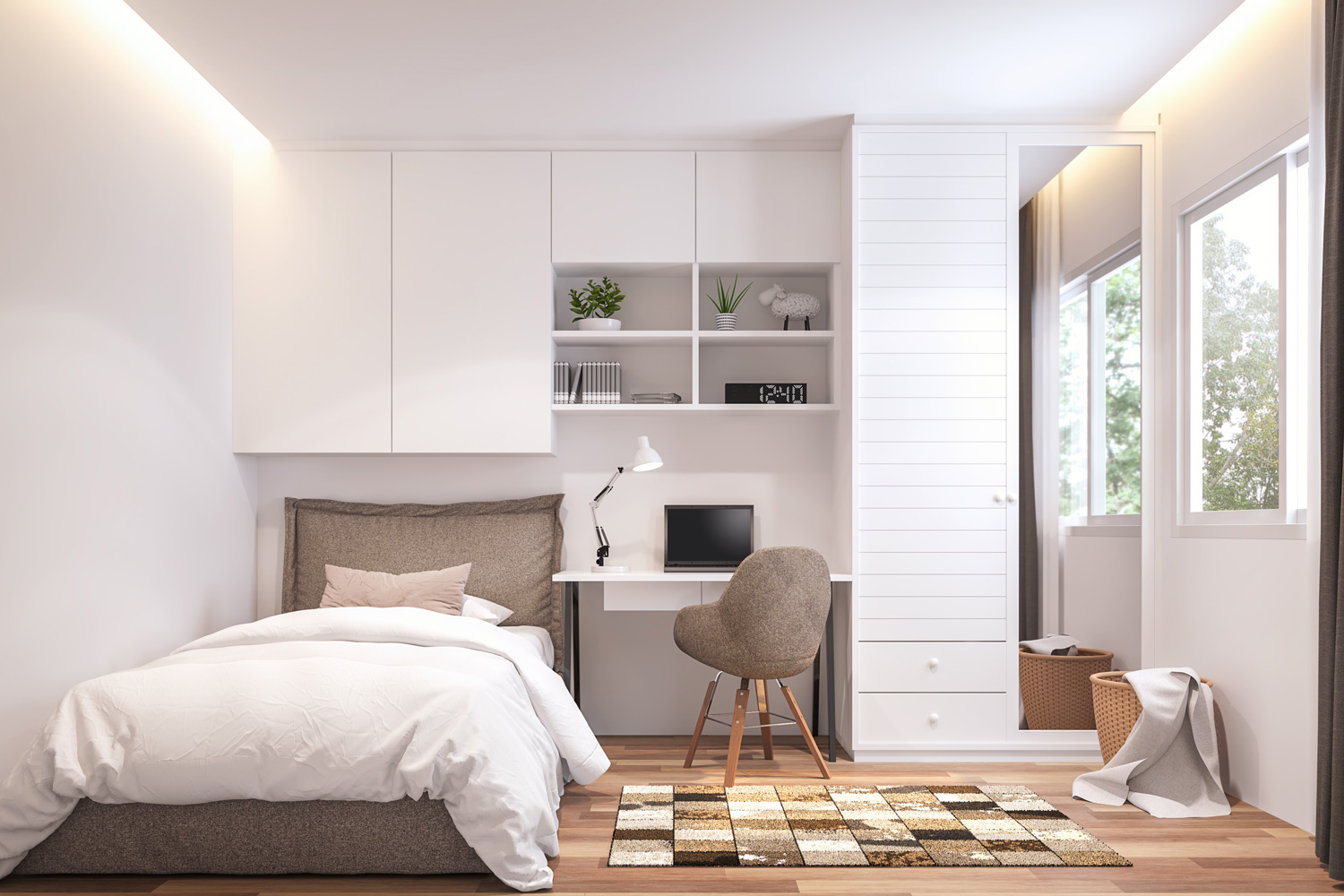Bedroom Decor Ideas Bed Under Window
Disclosure: We may get commissions for purchases made through links in this post.
Arranging a bedroom may be fun, but it raises important questions about the best placement for furnishings. If you are wondering if you should place a bed in front of a window, we can help with this decision. We researched suggested furniture arrangements for answers.
There isn't any set rule that says you should or should not put your bed under a window. However, placing a bed under a window has certain advantages and disadvantages.
Now that we know it's okay to place your bed under a window, we'll look at this arrangement's advantages and disadvantages. We will also cover the healthiest sleeping position and the best direction for your bed to face. Read on for more fascinating information.

Ideas To Consider If You Place A Bed Under A Window
Whether you choose to position your bed under a window out of necessity or preference, there are some important points to consider. A bed's position may influence your level of comfort and affect your safety.
It should be easy to access the window in a bedroom. Depending on a bed's size and placement in the bedroom, it can impede access to curtains and blinds. Leaving a bit of a gap between the bed and the window allows for easier access.
Headboards look great, but they can block natural light and limit your access to the window and any window coverings. Consider using a shorter headboard so this won't be a problem.

Advantages And Disadvantages When The Bed Is Under A Window
As we stated earlier in this post, there is no rule that says you should never put a bed under a window. But like any furniture arrangement, there are advantages and disadvantages with this placement.
Advantages
When a bed is under a window, you can position it so that it's framed nicely in the room. Because windows are often centered along a wall in the bedroom, add a touch of symmetry by placing nightstands or small tables on either side of the bed.
A bed near the window provides a cooler and more comfortable sleeping experience in warmer months. If you secure a box fan in the window, it helps to circulate the air from outdoors while sleeping in bed.
Some people find nighttime sounds soothing, and that it makes drifting off to sleep easier. If your head is near the window while in bed, it gives you a closer connection to these sounds. The light coming in at dawn also acts as a natural alarm, waking you in the morning.
Disadvantages
When your bed is under a window, it may be more challenging to open and close the window. While some people keep their windows closed year-round, others enjoy the natural flow of air into their homes.
A headboard can block natural light and might look unattractive in front of the window. Also, certain bed accessories can interfere with window dressings and mini-blinds, making them a chore to reposition.
Some people don't want to be exposed to the sun first thing in the morning. A bed under a window would require hanging thick dark drapes or blackout curtains to avoid sunlight from waking them.
What Is The Healthiest Sleeping Position?
When you think about it, the average person spends one-third of their life sleeping. When so much time goes toward this essential function, it's only natural to think about what position your body should be in while slumbering.
The back is best
Sleep experts state that those who sleep on their backs are putting their bodies in the best possible sleeping position. Sleeping on your back keeps your spine properly aligned. The neck and back will experience the least amount of strain when sleeping this way.
A well-rested back means you'll have more energy when you wake. It also means little to no back pain or kinks in your neck. Back sleepers usually have more energy throughout the day after getting a restful night of sleep.

Avoid the stomach
Stomach sleepers typically have more back and neck problems. To breathe while you sleep in this position, your head has to be turned to one side. This position strains your body and leaves many sleepers feeling pain when they wake.
Also, sleeping like this for a long period can put your spine out of alignment. If this happens, it can impact you during your waking hours and can lead to a great deal of discomfort.
If you are an avid stomach sleeper, try repositioning yourself into a side position. Also known as the 'fetal position,' sleeping on your side will probably leave you feeling more comfortable after waking, and it is better for your back and neck.

Side sleepers also have advantages
Most people sleep on their sides. Keep in mind, that this is an acceptable way to sleep as long as you are in a proper position.
Ensure that your chin is facing out when sleeping on your side. Doing this helps to keep your neck and head in alignment with your spine and avoid unnecessary strain on these points.

What Is The Best Location For Your Bed In A Room?
Everyone won't have the luxury of multiple potential positions for their beds. It's understood that smaller rooms or one containing multiple beds limit where to place a bed. However, larger bedrooms present the opportunity to showcase your decorating skills.
How you decorate and arrange your bedroom starts with how you position your bed. As the largest piece of furniture in the room, it is the most obvious focal point. So, where you place a bed heavily influences the flow and appearance of the bedroom.
Typically, it's said that you should center the bed along the longest wall in the room. When the head of the bed is against the wall, smaller pieces of furniture can accent it on either side.

Where is the Best Place to Put a Bed in a Small Bedroom?
Smaller bedrooms can be a bit of a challenge when you want to position a bed. This is especially true for a queen-size bed or larger.
If this describes your situation, you'll want to situate the bed along the longest wall. Just be certain that the bed doesn't block access to the bedroom closet. Having it along this wall will usually allow ample room for small dressers and nightstands.
Of course, you'll want to avoid blocking the bedroom doorway. For the smallest of bedrooms, you might consider a full-size bed to maximize the space.

Can a Bed Face a Window?
The longest wall in your bedroom might very well be an interior wall. The window in the room will most likely be opposite this wall.
Placing your bed opposite the window is perfectly okay. It will not interfere with your view of the outdoors and keeps your window treatments intact and in full view.
For best results, ensure there is enough room between the foot of your bed and the window. A minimum of two feet will allow for plenty of room to move around the bed.
Is There A Superstition About Putting A Bed Under A Window?

There are plenty of old myths surrounding placing a bed under a window. Some of you might have an elderly grandmother who gravely warns of people "catching death" from the night air flowing from an open window. The dangerous night air flows into the mouths of those unfortunately sleeping underneath the window.
Feng Shui cautions against placing a bed under a window. This placement causes the energy to escape your body and drift out the window. Also, this position may cause restless sleep and make you feel lethargic.
It's important to remember that these are just superstitions and have no practical place in the real world. And sometimes, you just can't avoid putting a bed under a window if the room is small.
In Conclusion
Putting a bed under a window can encourage a better sleeping experience and creates a framed look. If you have a smaller bedroom, there may be few placements for the bed. But, if you ignore superstition, choose the best arrangement, so your bedroom looks good.
Why Does My Bedroom Get So Hot At Night? [And What To Do About It]
10X10 Bedroom Layouts With A Desk [16 Awesome Ideas!]
How To Dry Bed Sheets Fast Without A Dryer—4 Alternative Tried And True Methods
Source: https://homedecorbliss.com/should-put-bed-front-window/
0 Response to "Bedroom Decor Ideas Bed Under Window"
Post a Comment